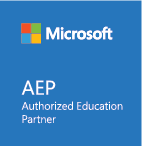What Hybrid Learning Taught Us – and Why It Still Matters
- Nov
- 30

Change is hard. Forced, unexpected change is even harder. Take transitioning to hybrid schooling, for example. Over the bumpy course of the crisis, up to 95% of in-person learning was lost. Students in England missed an average of 115 days, more face-to-face teaching time than anyone else in Europe.
Then, just as pupils were settling into their distance learning routines, we pulled the plug and called them back to school. The change in the educational landscape we’ve all experienced is severe, but if we take a dedicated moment to review, we’re likely to see the hidden gems emerging from this educational experiment.
1:1 learning remains essential
Even pre-pandemic, 1-to-1 computing was a high priority for schools. The problem was that individual institutions were all at various stages of the process, some years away from realising their goal of a device for every single student. COVID-19 moved up the timeline on 1:1 learning and proved how non-negotiable it really is.
The focus has shifted from emergency device acquisition to things like better record keeping for school issued devices and planning for total cost of ownership. Ed tech and e-learning tools are now so ingrained in the learning day, the question is no longer if students need devices, but how to find devices with the most cost-effective life cycles.
Hybrid learning is still providing benefits
There’s plenty of research to support the benefits of hybrid learning. But hybrid and blended learning environments don’t just support the learner. They make the educator’s job easier too. In fact, 94% of teachers say they are in favour of hybrid learning. Mainly because it allows them to pinpoint when and where a student may be falling behind and gives them access to tools and alternative learning methods to get them back on track.
In addition to opening up new ways of teaching, hybrid schooling also provides opportunities for more parental involvement. The UK government’s education catch-up tsar has said, “Parents’ evenings are likely to remain virtual beyond the pandemic,” citing how much more effective this year’s parent’s evenings were. The National Association of Head Teachers echoed the same and said they expected to see this type of hybrid model used for future events, too.
Flexibility must continue driving decisions
If the pandemic taught us nothing else, it’s the importance of always being prepared for change. Now’s no time to stop.
So how can schools strike the delicate balance of planning for the unknown and remaining agile as changes unfold? Staying open to experimentation, for starters.
Schools might even go so far as to restructure homework assignments to leave room in students’ schedules for important after-school enrichment activities and more family time.
Even school start times might need to shift, allocating mornings for younger students and giving teenagers the chance to catch up on sleep, at least on asynchronous learning days.
Though the learning curve of this crisis-era educational model was steep, coming out the other side schools have a unique opportunity ahead of them. By taking a thoughtful look at what went well and where things fell short, we can collectively create an even better system, one that prioritises equity and continued experimentation.






